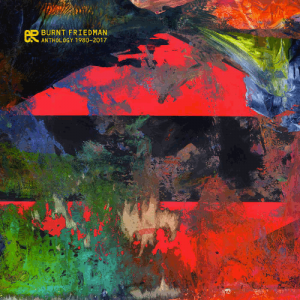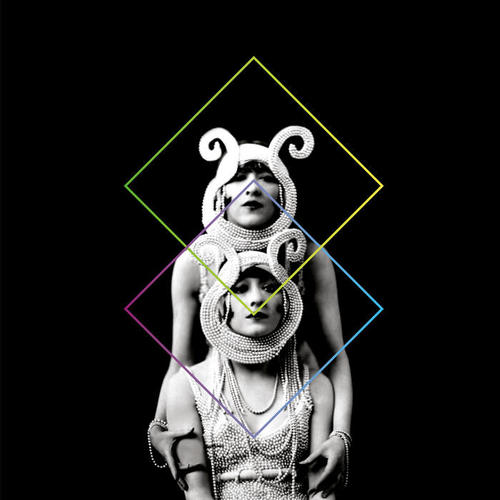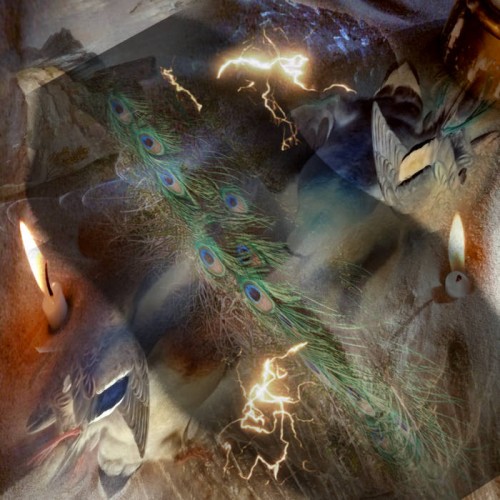 Burnt Friedman is one of those mystery names that seems to often be involved in so many collaborations. His work with Jaki Liebezeit in Cyclopean was a deliciously rhythmic stew and his stuff with David Sylvian, particularly the Nine Horses album was really lovely, so to be confronted with a compilation of his own work was a pleasant surprise and then to discover that it covers a thirty-five year period was an even greater pleasure. Looking through his biography, I didn’t even realise he was part of Drome from the 1990s, so clearly he has been beavering away from a very early age.
Burnt Friedman is one of those mystery names that seems to often be involved in so many collaborations. His work with Jaki Liebezeit in Cyclopean was a deliciously rhythmic stew and his stuff with David Sylvian, particularly the Nine Horses album was really lovely, so to be confronted with a compilation of his own work was a pleasant surprise and then to discover that it covers a thirty-five year period was an even greater pleasure. Looking through his biography, I didn’t even realise he was part of Drome from the 1990s, so clearly he has been beavering away from a very early age.
The earliest track on this album dates from 1980 and the most recent from 2017. Nine of the seventeen tracks come from the last ten years and the rest scattered over the previous twenty-seven, but the extraordinary thing is the constant quality and the fact that the album holds together really well. I would have expected this much disparate material to make for a bitty listen, but clearly Burnt’s aesthetic and his quality control are things that have stayed with him over his career. The songs are all quite stripped-back and there is plenty of space allowing them to spread around you, but the ideas worm their way into your head and make for quite an intense listening experience.
Obviously, the music electronic-based and apart from the odd guest on a track here and there, this is all his own work. Friedman is clearly one of those studio auteurs who knows exactly how to wring drama and unease as well as light and space from the coldest of materials. Opener “En Bu 2”, which comes from 2012, immediately sets your mind to work as a series of electronic rhythms are playing at odds to one another. It is disorientating as you wait for one of them to establish itself and take prominence, but it proves tricky. You want to dance but can’t select the right rhythm, and to add to the confusing texture, there are other light and insidious elements floating just out of reach, in the corner of your mind’s ear. It almost becomes something else at one point, but then devolves back to its original plan. This is quite breathtaking for an opening gambit, so follow up “Monkhide” from 2011 chills things out a little. It is more amorphous, still rhythmic but not so unsettling, and with the addition of reeds from Nathan Chisholm has an air of naturalism to it. There is a delightful sarod on “The Pestle” from 2010 and that faint trumpet sound lends some humanity to the squelches and squeaks that make up the rest of the texture. There is a kind of edgy playfulness here and a freshness that puts a smile on your face. You can envisage someone bouncing on springs in a toy factory at night while the restless rhythm clanks and grinds in the background. The juxtaposition between the sparseness and space around the tracks is interesting, and the humanity that is infused considering the majority of the sounds are electronically produced. “Acroagnosis” from 2016 is gentler and somehow more thoughtful. It moves like strange creatures communicating; gentle, subtle creatures, but ones that are still disconcerting to us. There is a void here: why and how I don’t know, but it draws you in.The beauty of the album for me is that there is very little that sounds like anybody else. You can hear some of the effects that may have been used on some of the Sylvian collaborations, noticeably on 2015’s “Languish”. There is a spaced-out Hammond sound on here and the selection of other sounds playfully tests your patience, but at other times the metallic throb and late-night sheen bring to mind the likes of Trans Am. This is most noticeable on the way the keyboard lines maraud around one another, attempting to spar on 1985’s “Sayonara” — but this is years before Trans Am’s existence and makes you wonder how much of an influence he has had in his low-key, subtle way. 1993’s “Day In Rho” has the kind of Mulholland Drive drama that David Lynch loves so much and the whispering sparseness of the droplets in a cave on 1988’s “Ochlott” brings to mind To Rococo Rot, the ghost of a beat making its way out of the darkness growing gradually stronger. The unreal sheen over the top is very Germanic, but again pre-dating the things that it reminds me of by some time.
Beavering away in relative isolation, releasing tracks from a seemingly endless supply of ideas and archive material, Burnt Friedman has carved his own niche. I imagine that the careers are almost separate, that of the serial collaborator and that of the solo soundscape producer, and they satisfy the two sides of this driven individual. I am pleased that this anthology came across my path as it has so much to offer. I need to discover what else is out there and I suggest if edgy electronica with a beating heart is your cup of tea, then this is a great place to explore.-Mr Olivetti-



